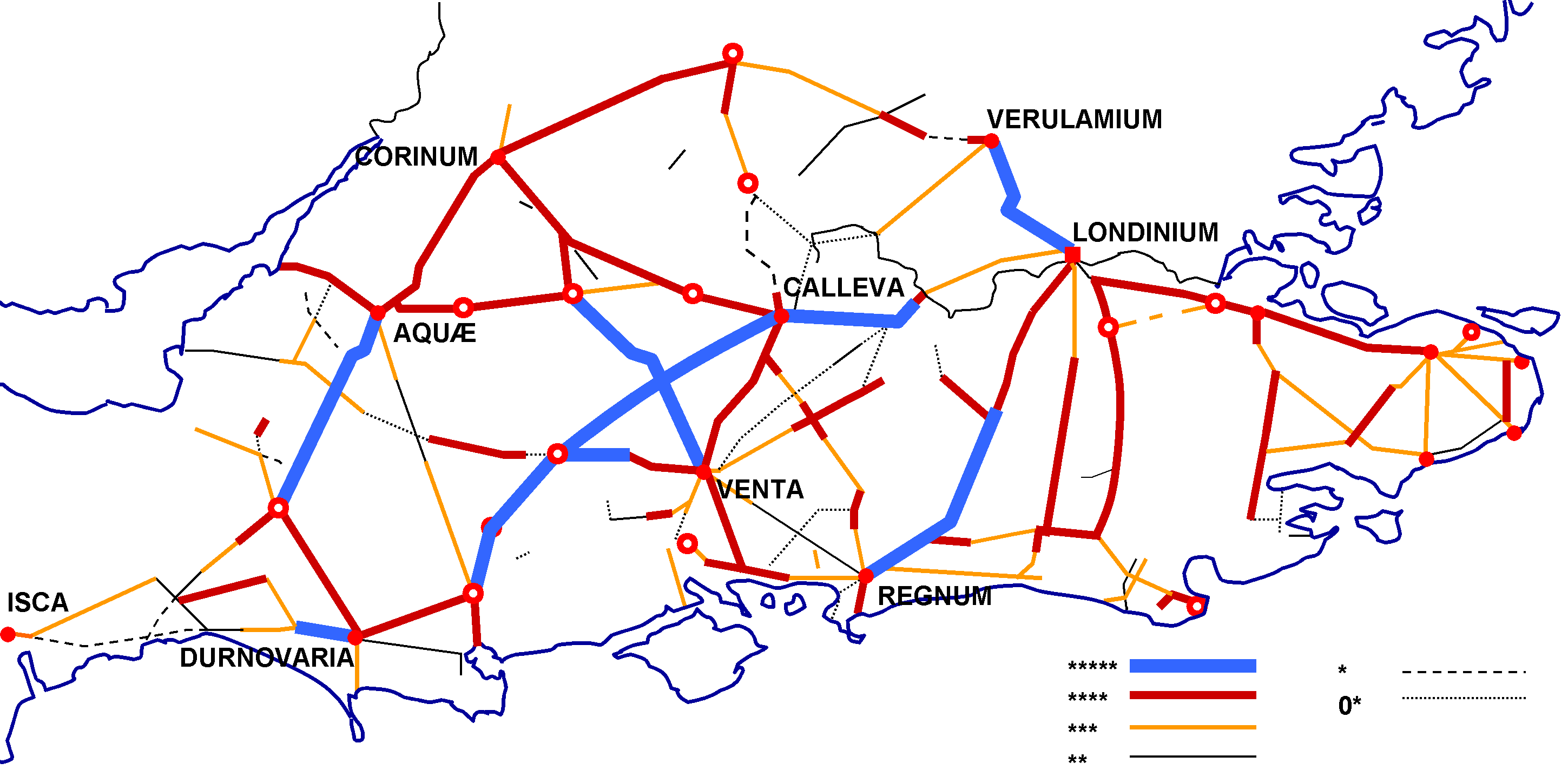Introduction
The purpose of Roman Road Abstracts is to update the last comprehensive book on Roman Roads, Margary's Roman Road in Britain which took the position up to 1973. This is being undertaken by NEHHAS - Field Archaeology Branch, starting with the Roman Roads in the South and West of England.
Local Societies have been asked to provide brief abstracts of their post Margary Roman Road findings, together with references to them in their publications, or anticipated references. Archive references might be acceptable, if they are prepared to provide copies to other workers at a reasonable charge.
The abstracts are brief, it is assumed that those interested will obtain the details from the references cited.
It is hoped this project can be repeated for other parts of the country, and provide material for a complete Margary up-date.
Unlike Margary, it is intended to report projects in all states, so workers will have knowledge of all potential routes. To indicate the state a project has reached, a star system is given. This is not intended to rate the quality of the work, but merely the state to which the investigation has achieved.
The compilers have not sought to visit the routes, nor read the references cited in the Abstracts. All readers with knowledge of the findings are invited to advise us of rating changes. Email Richard Whaley This publication will be updated on receipt of new information, and will be supplied in the state it is in at the time a request is made.
5*
4*
3*
2*
1*
0*
A higher rating will be achieved where the Road has meaningful objectives in the Roman context, e.g. leaving or approaching known Roman sites or other Roads. Finding additional alignments increases the rating of those already known. Remains, however convincing, which come from nowhere and lead nowhere cannot be taken as evidence of a particular route, though will be valuable to other workers who may have evidence to link up with it.
Problems occur with Class 3 routes. In a few places like St Albans workers have reported intense Road networks. These additional Roads may be private Roads linking villas with the official network or local communities with each other. These may be different from the official network constructed and maintained by the army with the characteristic standards and straight alignments. If such alignments are absent then establishment by "accumulative evidence upon an alignment" is not so readily possible. It is likely to mean that to obtain 4* more excavation sites will be necessary. It is not known if these private Roads had the characteristic side ditches - excavations should always be taken out at least to the 62' spacing. It is not however known if all the official network Roads have these side ditches.
The Map shows our assessment of the Roman Roads in the regions covered by these Roman Road Abstracts. The assessments are made from Margary 1973 "Roman Roads in Britain" (Baker, London), and these Abstracts. As discussed in the individual star ratings, there is a wide spectrum of Rating to which the various Roads have been established.
[A graphics file is provided with 360 dpi
resolution, which gives high quality print outs. The quality of screen
display will be less, and will depend on the software you are using. Good
screen display of graphics is given by MS WORD. Your internet software
may have access to a Slide Show option which can give very good screen graphics.
(A menu comes up with your mouse on the graphic enabling you to select a Slide
Show; a further menu comes up on the Slide Show with your mouse on the Show,
enabling you to control it, and return to the text.)]
Purchase of Roman Road Abstracts
Ratings
Major Roman Road where the course on the ground is exactly known for most of its route. Applies to routes like the Devil's Highway or Foss Way, and not many more are likely to be found.
Margary's criteria for establishing a Roman Road: cumulative evidence upon an alignment, with excavation in at least one place on most alignments. While the line across country is established, it does not mean that each piece of evidence must be shown to come from Roman origins, nor that the Road's exact position is known on the ground except at excavation sites or possibly at terrace sites.
Accumulative evidence upon the alignments, but without the excavation evidence. Quite a lot of the Margary entries are of this class. Individual pieces of evidence may be coincidence, but the whole gains credibility the more alignment evidence is gathered, until it becomes quite probable that the alignments are Roman.
Projects based on sound documentary theory, but without the full standard of accumulated field evidence upon alignments. May be becoming probable. Some Margary entries of this class.
Sound documentary theory of long lines of parish, field & property boundaries, paths, place names, Saxon Charter and other historical documents, air photos, but without significant field evidence. A few Margary entries of this class.
Some documentary or field evidence, but not enough to assign any probability. May be worth expanding research from evidence available. Margary entries in this class exist.

Advice to lone researchers
Return to Contents